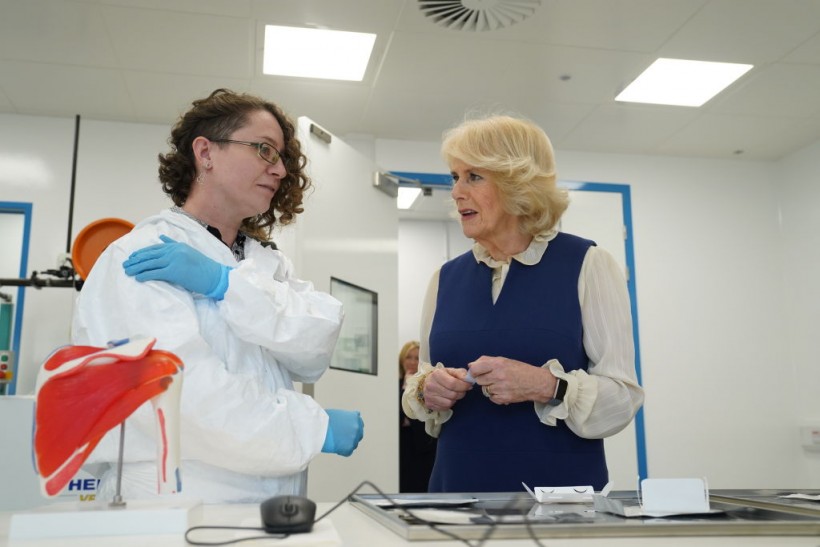According to a study published in Nature, researchers from the University of Oxford have created a ground-breaking power source that was inspired by electric eels and might be utilized for medicinal applications such as targeted medication administration and quick healing of wounds. The goal of the study is to realize the promise of small, bio-integrated devices.

(Photo: Steve Parsons - WPA Pool/Getty Images)
Camilla, Duchess of Cornwall is given a tour of research spaces during a visit to the University of Oxford on January 26, 2022, in Oxford, England.
Hindering Aspects
The Oxford team's novel method of microscale energy generation provides a look into the potential of bio-integrated devices, which have been constrained by the absence of effective power sources, including traditional batteries due to their bulkiness.
Read Also: VR-Based Mental Wellness Platform Powered by Oxford University's Oxford VR is Launched
Inspiration From Nature
Researchers have created a miniature power source that can influence the behavior of human nerve cells, inspired by electric eels. The device uses internal ion gradients to generate energy, similar to how electric eels generate electricity.
The device's core is a chain of five nanolitre-sized droplets of conductive hydrogel, separated by lipid bilayers that provide mechanical support and prevent ion-flow between the droplets.
The power source is produced by chilling a conductive hydrogel structure to 4 °C and lipid bilayer dissolution. Ions can move across the continuous hydrogel that is produced as a result. The energy is converted into electricity via electrodes attached to the end droplets, allowing the hydrogel to power external components.
The central component of the innovation is a chain of five nanolitre-sized droplets, each having a distinct composition and a gradient of salt concentration. Lipid bilayers that separate these droplets offer mechanical stability and restrict ion passage.
Initial Testing
Researchers have created a tool that uses ionic current to control the activity of live cells. A chain of five conductive hydrogel droplets the size of nanoliters makes up the gadget, which has a maximum output power of 65 nanowatts and can sustain a constant current for more than 30 minutes.
Even after being stored for 36 hours, the gadget still operates at identical current levels. The distinct droplet makeup produces a gradient in salt concentration throughout the chain, which is supported mechanically and prevented from having ions flow through it by lipid bilayers.
Future for Biotechnology
Lead researcher Dr. Yujia Zhang has created a tiny soft power source that uses ion gradients to control cells and tissues on a microscale. Potential uses for this cutting-edge technology exist in biology and medicine.
Its modular construction enables the combination of numerous units to boost voltage and current output, which may be used to power upcoming wearable technology, bio-hybrid interfaces, implants, synthetic tissues, and microrobots.
The researchers have even used 20 five-droplet units connected in series to illuminate a light-emitting diode that needs roughly 2 Volts. In order to build networks of thousands of power units, the researchers want to automate device creation using a droplet printer.
Related Article: TikTok Urged to Take Action Over Oxford Street 'Robbery' Campaign









